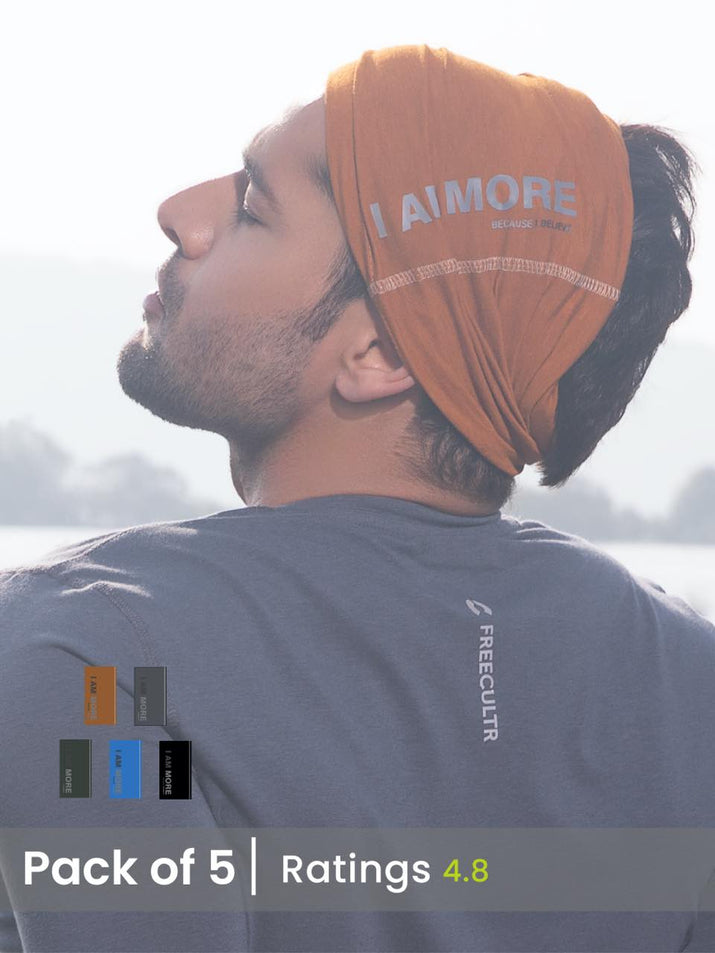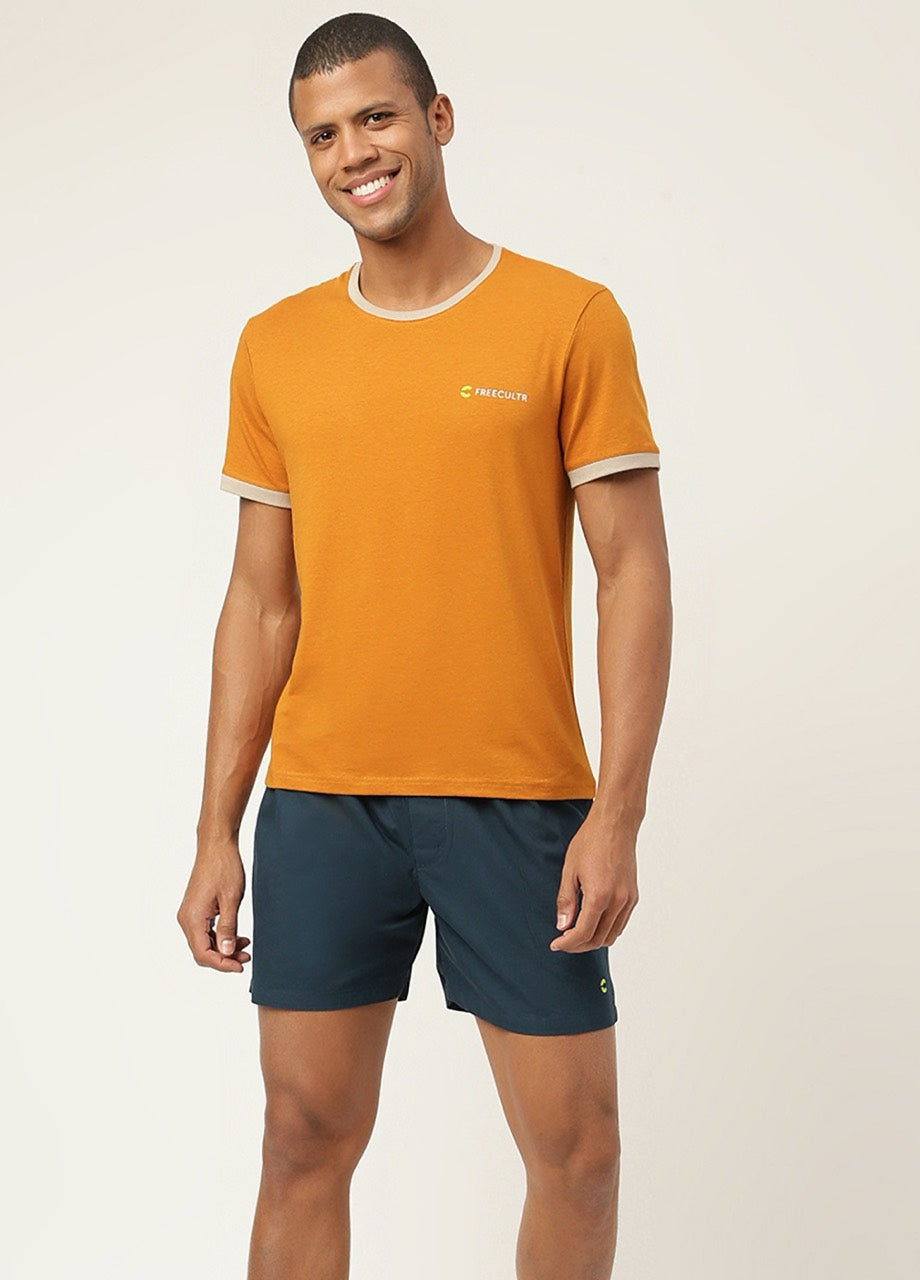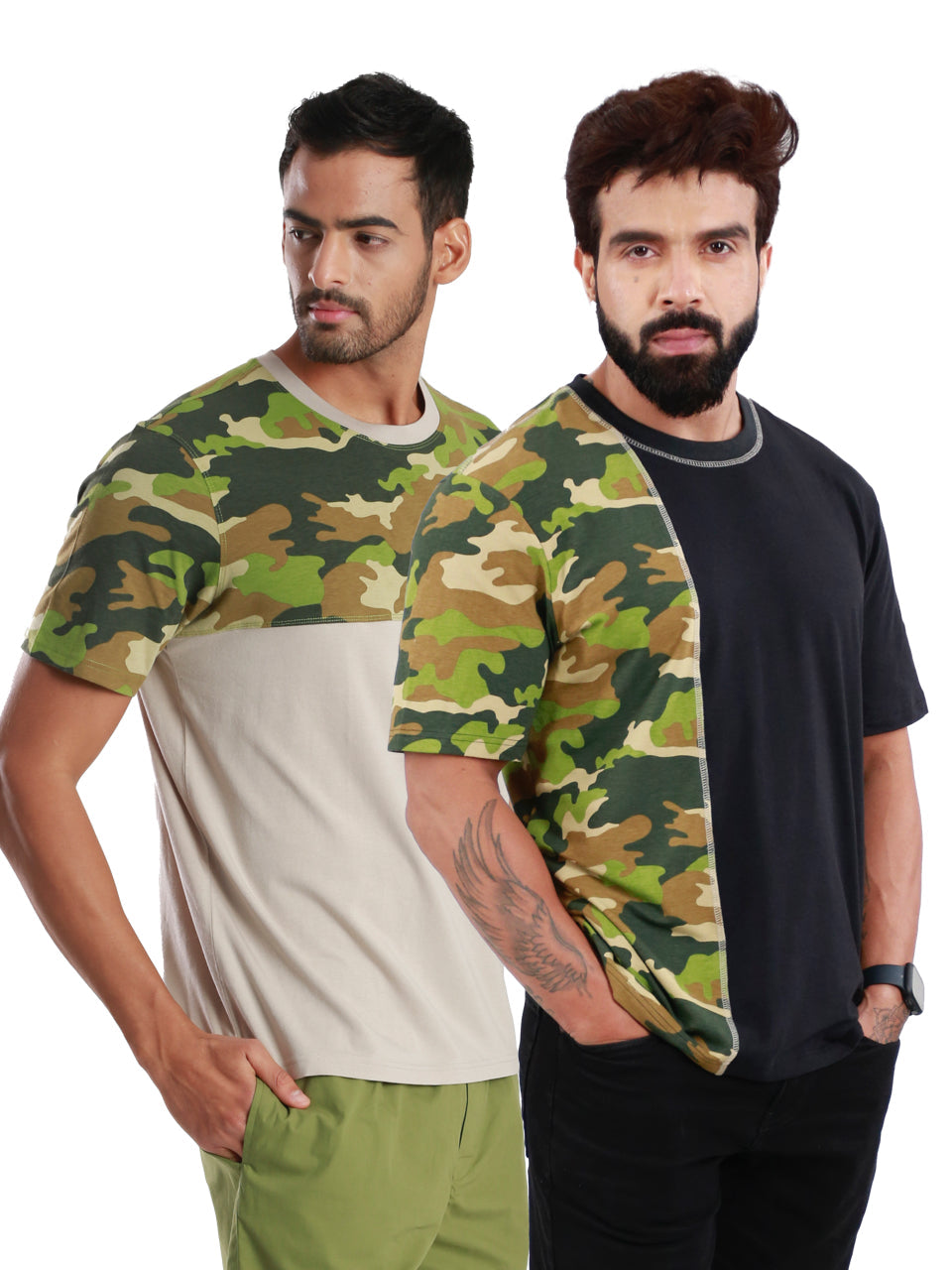The bandana for men has evolved far beyond a simple fashion statement, establishing itself as a sophisticated, multi-functional accessory for the contemporary wardrobe. Modern iterations often feature advanced technical fabrics, including those with UPF 50+ ratings, providing critical sun protection for outdoor pursuits from cycling to trail running, alongside effective moisture-wicking capabilities for sweat management. This adaptable textile offers diverse utility, functioning as a protective neck gaiter, a sweat-absorbing headband, or a stylish accent in urban environments. Its current prominence reflects a broader trend towards highly functional, versatile apparel, solidifying the bandana's role as both an indispensable practical tool and a key element of personal style.

The Enduring Appeal of the Bandana for Men
Once a simple piece of cloth, the bandana has transcended its humble origins to become a powerful statement accessory and a practical tool for men across various walks of life. Derived from the Hindi word ‘bandhnu,’ meaning to tie, the bandana’s journey is rich with cultural significance, from cowboys and sailors to rock stars and modern-day adventurers. Its enduring appeal lies in its incredible versatility, offering a unique blend of style, comfort. utility. For many, a bandana for men isn't just a fashion choice; it's a nod to heritage, a symbol of rebellion, or simply a smart way to manage the elements.
Historically, bandanas served as practical items for working men – think of cowboys using them to keep dust out of their faces or railroad workers wiping sweat. Over time, they evolved, becoming associated with various subcultures and fashion trends. Today, the bandana for men stands as a testament to timeless design, proving that functionality and flair can indeed go hand-in-hand.
Beyond Style: The Practical Power of Sun Protection
While often celebrated for its aesthetic versatility, one of the most underrated benefits of a bandana for men is its practical application as sun protection. Exposure to harmful ultraviolet (UV) radiation from the sun is a significant health concern, leading to issues ranging from sunburn to premature skin aging and an increased risk of skin cancer. A bandana, when worn correctly, offers an effective physical barrier against these rays.
Consider a typical summer day spent outdoors. Your neck, ears. scalp (especially if hair is thinning) are highly vulnerable areas often overlooked by sunscreen application. A bandana provides immediate, tangible protection. For instance, wearing a bandana tied around the neck can shield the delicate skin from direct sunlight, reducing the risk of sunburn and long-term damage. Similarly, wrapping it around the head can protect the scalp and even help manage heat by wicking away sweat.
Beyond UV protection, a bandana can also help regulate body temperature. On hot days, a damp bandana wrapped around the neck or head can provide a cooling effect through evaporative cooling. Conversely, on cooler, windy days, it can offer a layer of warmth and protection against biting winds, making it an all-season accessory.
Choosing Your Perfect Bandana: Materials and Designs
The effectiveness and comfort of a bandana for men largely depend on its material and design. Understanding the properties of different fabrics is key to selecting the right bandana for your needs, whether for style, sun protection, or both.
Here’s a comparison of common bandana materials:
| Material | Characteristics | Pros | Cons | Ideal Use Cases |
|---|---|---|---|---|
| Cotton | Natural fiber, soft, absorbent, breathable. | Excellent breathability, good for sweat absorption, comfortable against skin, wide range of colors/patterns, affordable. | Can feel heavy when wet, slower drying than synthetics, may wrinkle easily. | Everyday wear, casual style, light sun protection, general utility. |
| Polyester/Synthetic Blends | Man-made fibers, often with moisture-wicking properties, quick-drying. | Lightweight, very quick-drying, durable, excellent moisture management (wicking sweat away), often have built-in UV protection. | Less breathable than cotton, can feel less natural, may retain odors if not treated. | Athletic activities, intense sun exposure, hiking, cycling, situations requiring quick-drying properties. |
| Silk | Natural protein fiber, smooth, luxurious feel, good insulation. | Extremely soft, comfortable, elegant drape, good temperature regulation (cool in summer, warm in winter). | Expensive, delicate (requires careful washing), less absorbent for sweat, can slip easily. | Fashion accessory, formal casual wear, situations where elegance is desired, light sun protection. |
| Linen | Natural fiber from flax plant, crisp, strong, highly breathable. | Very breathable, quick-drying, excellent for hot climates, develops character with age. | Wrinkles easily, can feel coarser than cotton initially, less common for bandanas. | Hot weather wear, specific fashion statements. |
Beyond material, size and pattern play a crucial role. Standard bandanas are typically 22x22 inches, offering ample fabric for various tying methods. Larger sizes (e. g. , 27x27 inches or even larger for specific tactical uses) provide more coverage, which can be beneficial for extensive sun protection or more elaborate styling. Patterns range from the classic paisley and polka dot to solid colors, abstract designs. even novelty prints. Your choice of pattern can reflect your personality and complement your outfit, making the bandana for men a truly personal accessory.
Mastering the Art of Wearing a Bandana for Men
The versatility of the bandana for men truly shines in the myriad ways it can be worn. Each method offers a different aesthetic and level of practicality, allowing you to adapt it to any situation. Here are some popular and effective ways to wear a bandana:
- The Classic Neck Tie Fold the bandana into a triangle, then roll it from the pointed end towards the base, creating a strip. Wrap it around your neck and tie it in the front, back, or to the side. This offers excellent sun protection for the neck and adds a timeless, rugged charm. It's a go-to for bikers and outdoor enthusiasts.
- The Headband Fold the bandana into a strip as above, then tie it around your forehead, either under or over your hair. This is great for keeping sweat out of your eyes during physical activity, managing unruly hair, or simply adding a casual, sporty vibe. It also provides direct sun protection for the forehead and hairline.
- The Full Head Wrap For maximum sun protection for the scalp and neck, fold the bandana into a triangle. Place the longest edge across your forehead, with the point hanging down your back. Bring the two side points around to the front and tie them over the third point. This style, often seen on construction workers or in very sunny climates, is highly effective at blocking UV rays.
- The Wrist Wrap A simple way to add a touch of style or keep a bandana handy. Fold it into a strip and tie it around your wrist. While offering minimal sun protection, it's a subtle fashion statement and can be quickly deployed for other uses if needed.
- Pocket Square A more formal application. Fold a smaller or specifically designed bandana (often silk) and place it in your suit jacket's breast pocket. This adds a pop of color and texture, elevating your formal or smart-casual attire.
- Bag Accessory Tie a bandana to the strap or handle of your backpack, duffel bag, or messenger bag. This is a simple way to personalize your gear and always have a bandana within reach for unexpected needs.
Experimentation is key! What works for one person might not work for another. Consider your outfit, the weather. the activity you'll be doing when choosing how to wear your bandana for men.
Real-World Applications: Where and When to Wear a Bandana
The versatility of a bandana for men extends far beyond mere aesthetics, making it a truly functional accessory in a variety of real-world scenarios. Its adaptability means it can transition seamlessly from a rugged outdoor essential to a refined fashion statement.
- Outdoor Adventures This is where the bandana truly shines.
- Hiking and Camping Wear it as a headband to absorb sweat, a neck gaiter for sun protection against the back of the neck, or even as a makeshift bandage or sling in an emergency. I recall a backpacking trip where a sudden downpour necessitated using my cotton bandana to quickly wipe condensation from tent walls before packing up.
- Cycling and Motorcycling Under a helmet, a bandana can absorb sweat, keep hair in place. provide an extra layer of comfort. For motorcyclists, a bandana tied around the face can protect from dust, insects. road debris, while also offering crucial sun protection for the lower face and neck.
- Fishing and Boating Essential for protecting exposed skin from relentless sun reflection off the water. A full head wrap or neck gaiter style is ideal here.
- Gardening and Yard Work Keeps sweat out of eyes, protects the scalp from sun. can even be used to wipe dirt or excess moisture.
- Fashion and Personal Style The bandana for men has a strong presence in various fashion trends.
- Casual & Streetwear A bandana tied around the neck with a t-shirt and jeans creates an effortlessly cool, rugged look. Worn as a headband, it adds a retro or sporty vibe.
- Workwear & Heritage Style Pair a classic paisley bandana with denim jackets, work shirts. boots to lean into a timeless, utilitarian aesthetic. It evokes the spirit of historical laborers and adventurers.
- Music & Subculture From rock and roll to hip-hop, bandanas have been iconic accessories, signaling belonging or simply adding a rebellious edge.
- Everyday Utility Beyond specific activities, a bandana can be surprisingly useful in daily life.
- Emergency Cloth A clean bandana can serve as a makeshift handkerchief, a lens cleaner for glasses or phone screens, or even a small carry pouch for collected items.
- Hair Management For men with longer hair, a bandana is an excellent tool for keeping hair out of the face, especially on windy days or during active pursuits.
- Dust Mask In dusty environments, a bandana can be quickly tied over the nose and mouth to provide a basic barrier against airborne particles.
As you can see, the applications for a bandana for men are incredibly diverse, solidifying its status as a must-have accessory for both practical needs and stylistic expression.
Caring for Your Bandana: Longevity and Hygiene
To ensure your bandana for men remains a stylish and practical accessory for years to come, proper care is essential. Regular cleaning not only maintains its appearance but also ensures hygiene, especially if it's used for sweat absorption or sun protection.
- Washing Most cotton bandanas can be machine washed with similar colors in cool or warm water. For synthetic blends, follow the specific care instructions, often recommending cool water to preserve moisture-wicking properties. Silk bandanas are more delicate and typically require hand washing in cool water with a mild detergent, or dry cleaning. Always check the label if available.
- Drying Air drying is generally best for all types of bandanas, as it helps preserve fabric integrity and prevent shrinkage, especially for cotton. If using a dryer, tumble dry on a low heat setting. Over-drying can make cotton brittle and reduce the lifespan of synthetic fibers.
- Ironing Cotton bandanas can be ironed on a medium-high setting to remove wrinkles and restore their crispness. Synthetic and silk bandanas should be ironed on a very low setting, or ideally, steamed to avoid damaging the fibers.
- Storage Store bandanas flat or neatly folded to prevent creasing. Keep them in a dry, clean place away from direct sunlight to prevent fading. Having a few bandanas in rotation can also extend the life of each individual piece.
By following these simple care instructions, your bandana for men will continue to serve as a reliable and stylish companion, ready for whatever adventures or fashion statements you have in mind.
Conclusion
Embracing the bandana for men goes beyond merely adding a stylish accessory; it's about smart, versatile utility. As we've seen, whether you're channeling a classic biker vibe, securing your hair during an intense workout, or simply shielding your neck from the harsh midday sun, its practical applications are immense. I personally find a lightweight, dark-colored bandana indispensable for summer hikes, effortlessly absorbing sweat while providing crucial UV protection, much like a modern neck gaiter. It’s no wonder this timeless piece is re-emerging in current street style and outdoor wear trends, offering that perfect blend of rugged appeal and thoughtful sun-safe practices. Don't hesitate to experiment with different folds – perhaps a headband for a casual weekend look, or a neckerchief for a more refined touch. Let your bandana be a statement of both your personal style and your commitment to comfort and protection, empowering you to tackle any day with confidence.More Articles
Bandana – Outdoor Protection & Expressive StyleTees – Casual Versatility & Moisture-Wicking Performance
Men's T-Shirt – Premium Softness & Lasting Durability
Micro Modal Underwear – Unmatched Softness & Supreme Breathability
FAQs
What exactly is a men's bandana?
A men's bandana is typically a square piece of fabric, often cotton, that guys wear in various ways – around the head, neck, wrist, or even tied to a bag. It's both a fashion statement and a useful item.
How can a guy style a bandana?
There are tons of ways! You can fold it into a headband to keep hair back or sweat out of your eyes, tie it around your neck like a casual scarf, wrap it around your wrist, or even just let it hang out of a back pocket for a touch of flair.
Beyond looking cool, what practical uses does a bandana offer?
It's surprisingly versatile! It can absorb sweat, keep your hair out of your face during activities, provide warmth for your neck on a chilly day, or even act as a makeshift dust mask in a pinch.
How effective is a bandana for sun protection?
A bandana offers good basic sun protection by covering exposed skin like your scalp, forehead, or neck. While it's not a substitute for sunscreen, it definitely helps shield you from direct sun rays and can prevent sunburn on covered areas.
What materials are common for men's bandanas?
Most bandanas are made from 100% cotton, which is breathable, soft. easy to wash. You might also find blends with polyester for added durability or quick-drying properties. cotton is the classic choice.
Can I just throw my bandana in the wash?
Yep, absolutely! Most cotton bandanas are machine washable. It's usually best to wash them with similar colors in cold water to prevent fading and tumble dry on low or air dry. Easy peasy.
Are there specific patterns or sizes I should look for?
Bandanas typically come in a standard square size, around 22x22 inches, which works for most styling options. As for patterns, the classic paisley is popular. you'll find everything from solids to geometric designs, checks. even novelty prints. Pick what suits your style!






